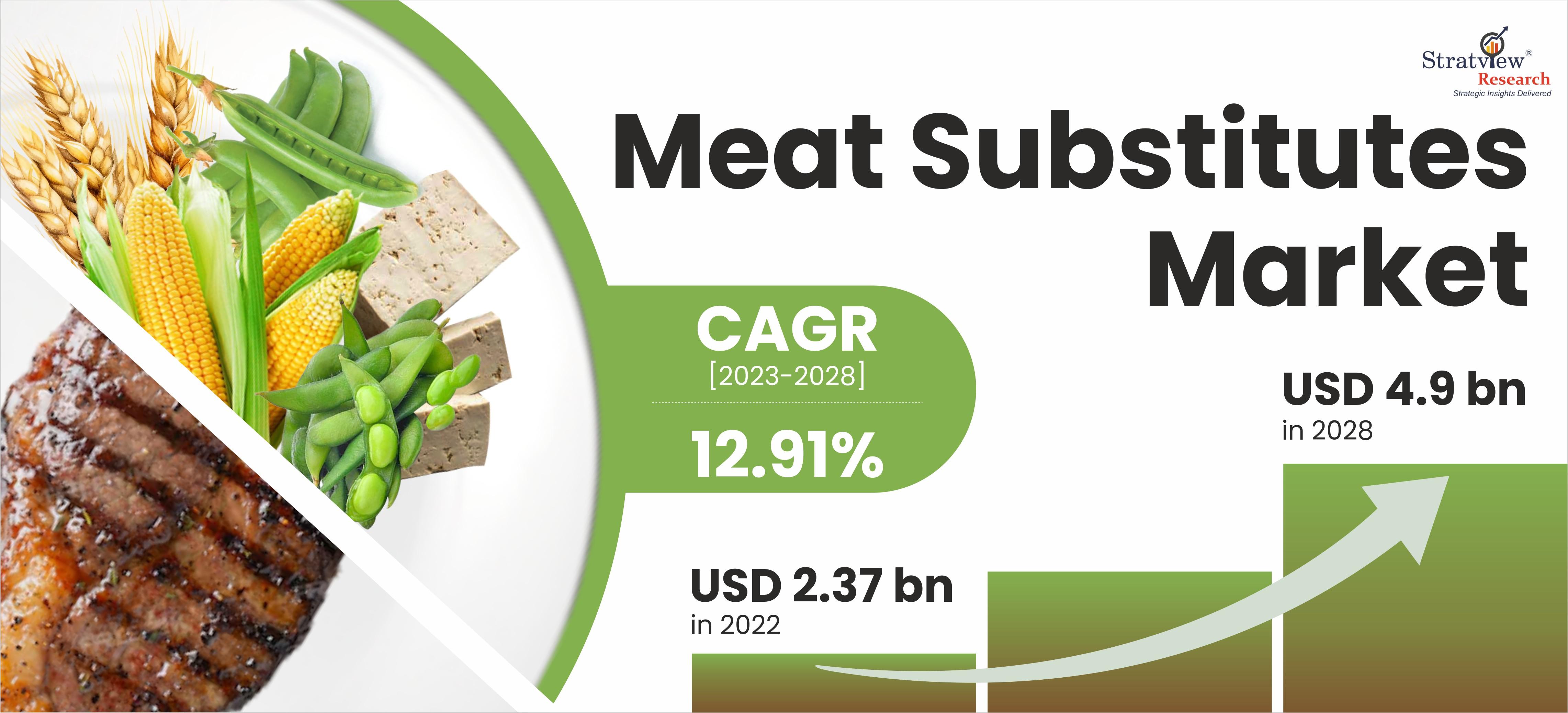Meat Alternatives and the Future of Food: What’s Driving Market Growth?

The meat alternatives market is rapidly reshaping the global food landscape, driven by shifting consumer preferences, environmental concerns, and technological advancements. As more people adopt plant-based diets, the demand for meat alternatives is growing at an unprecedented pace. Understanding the forces behind this surge can shed light on what the future of food may look like.
According to Stratview Research, the meat substitutes market was estimated at USD 2.37 billion in 2022 and is likely to grow at a CAGR of 12.91% during 2023-2028 to reach USD 4.9 billion in 2028.
Health and Wellness Prioritization
One of the primary drivers of growth in the meat alternatives market is the increasing focus on health and wellness. Consumers are becoming more aware of the potential health risks associated with high consumption of red and processed meats, such as heart disease, obesity, and certain cancers. As a result, many are turning to plant-based alternatives, which are often perceived as healthier options. Products like soy-based burgers, pea protein sausages, and other meat substitutes are designed to be lower in cholesterol and saturated fats, appealing to those looking for nutritious choices without sacrificing flavor.
Additionally, the rise of flexitarian diets—where individuals aim to reduce their meat intake without fully eliminating it—has broadened the appeal of meat alternatives. This flexible approach to eating has introduced plant-based options to a much larger audience, further propelling market growth.
Environmental Sustainability
Environmental concerns are another major factor driving the adoption of meat alternatives. The traditional meat industry is a leading contributor to greenhouse gas emissions, deforestation, and water consumption. As climate change becomes a more pressing global issue, consumers are seeking more sustainable ways to eat. Meat alternatives, which typically have a smaller carbon footprint and lower resource use, are being viewed as a key solution.
Many companies in the meat alternatives industry are actively promoting their products as environmentally friendly, using sustainability as a core selling point. This message resonates particularly with younger, eco-conscious consumers who are looking to align their food choices with their environmental values.
Technological Innovation
Advancements in food technology are also playing a crucial role in the growth of the meat alternatives market. In recent years, innovations in plant-based protein extraction, fermentation, and even lab-grown meats have led to products that closely mimic the taste, texture, and appearance of traditional meat. These advancements are breaking down the barriers that once deterred consumers from embracing meat alternatives, making the transition from animal-based to plant-based protein easier and more enjoyable.
Cultural and Ethical Shifts
Cultural shifts toward ethical eating habits are further accelerating market growth. Growing awareness of animal welfare issues associated with factory farming has led many consumers to seek alternatives that do not involve animal suffering. As the ethical argument against meat consumption gains traction, the demand for meat substitutes continues to rise.
Conclusion
The future of food is being shaped by a convergence of health-conscious consumers, environmental advocates, and technological innovators. The growth of the meat alternatives market is a reflection of changing global priorities, with consumers increasingly opting for food choices that align with their values of health, sustainability, and ethics. As the industry continues to evolve, meat alternatives are poised to become a staple in the diets of people around the world, heralding a new era in the way we produce and consume food.
- Art
- Causes
- Crafts
- Dance
- Drinks
- Film
- Fitness
- Food
- Jogos
- Gardening
- Health
- Início
- Literature
- Music
- Networking
- Outro
- Party
- Religion
- Shopping
- Sports
- Theater
- Wellness


